University ofPennsylvania
Large Animal Dermatology
reatmentofskindiseasesis avital partofa smallanimal practice. Forthelargeanimal practitioner, however, treatmentofskin diseasesisjust asmall partofhis work. "Skintroubleinhorses and livestockisoften diagnosed inctdentally becausethearuma!isbroughtin fur anotherreason andnotforits lumps. bumps. orbald spots,"saidDr.KevinShanley, assistantprofessor of dermatologyat theUniversityofPennsylvaniaSchoolof Veterinary Medicine. "Notmuch research bas been devoted to largeanimal dermatology, but that is changing. ltis anemerging field.Here wearetryingto focus onitmoreandhaveestablisheda bimonthlyclinic fordermatologyproblems attheGeorge D. Widener Hospira1 torLargeAnimals attheNewBoltonCenter campus.Wehopeto seemanymorecasesas practitionerslearnaboutthenew clin.ic.lt willalsoprovide ourstudents withgreaterexposuretoskindiseasesof largeanimals."
Skindiseasesillhorsesandfood animals arerarely Life-threatening, yettheycaninterferewiththeanimal's performance,Hsgeneralhealth, and theyield ofmilk, meat, orhides. Skindiseasesalsoprovideanopportunityforbacteria to entertheanimal'ssystem, causing unsightlyinfectionand debilitation.Asinthedogand cat,skin diseasesinlargeanimals canbecaused by parasites, allergies andbacteria, as wellasviruses. There are additionalcausessuchasfeedmaterials whichresultinextremesensitivity to sunlight, and environmentalfuctorssuchasprolonged wetweather whichcan facilitate skininfections
..Becausemostowners of largeanimal11do not worry too muchabout afewbaldspotSor pustules, thedisease isoften advanced whenthe veterinarian seesit;' said Dr. Shanley, "making it morecostlyto treat. Also,if oneisdealing with acontagious organi:sm, it mayhave spreadtoother animalsintheherd bythetimeitis diagnosed-"

Diagnosis ofskin diseasesinhorsesor largeanimals isoftencomplicatedby owners' attemp� to curethe problem withamyriad ofointments, tinctures,and other homeremediesbeforeseeing the veterinarian. Thiscanchangetheclinicalpictureofthedisease. By thetimethe veterinariansees the animal, diagnosismay notbe so easyand canonly be madeafter evaluatingthe history andall thetreatmentstried
Clean,dryconditions andregular grooming contributemuch totheprevention ofskin problems.
Continuedonpage7
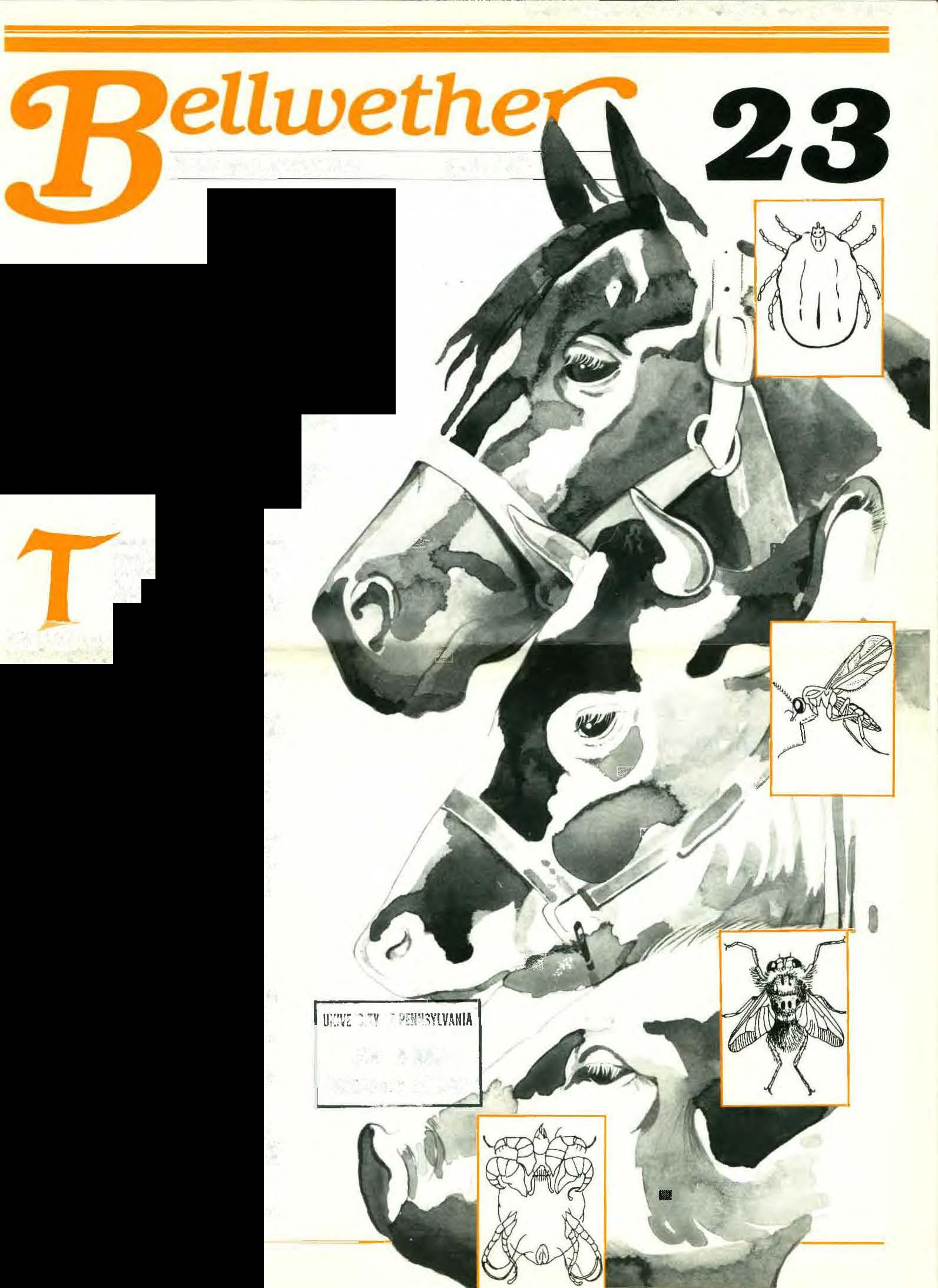
From the Dean
As the crocuses and daffodils break the new Spring's crust, we as a school are showing our new colors.
The Markey Trost has provided liS with a marvelous grant to supporl a new effort in molecular genetics at both the Veterinary and Medical Schools. The research supported by the grant willgreatly enhance our understanding of the application of gene therapy to the benefit of animals and, hopefully, man.
At our New..Bolton Center campus, the Connelly Intensive Care Unit/Graham French Neonatal Section is taking its fiJtal fonn and shortly we will be dedicating the Stubbs lAboratory, an important poultry research and diagnostic resource geTJerously fuTJded by the Commonwealth of Pennsylvania.
As the scaffolding Oil our historic quadrangle is dismantled, the traditional symbol of the school with its beautiful brickfacade will shine anew.
We have a flew fiscal plan, a new administrative organillztion, arzd new ideas for the School's direction. We have begwz a strategic planning process to define our role in veterinary education. This effort,fundedby the Pew Charitable Trnsts, will help prepare us for the needs of veterinary medicine in the 21st century.
As my first year in the deanship comes to an end, I am thankful for the support of the faculty and staff, the continuing kindness of our friends, the confidence of our many agricultllral constilllencies, the enthusiasm of our students, andthe commitment of the Commonwealth of Pennsylvania to our educational, research, and service mission.
-EdwinJ.Andrews,V.M.D.,Ph.D.Exploring Gene Therapy
Under a$3.8milliongrant fromtheLucilleP. Markey CharitableTrusts, Penn will buildupgenetic researchin thenextfiveyearsintwohealthscboolsMed1cine,andVeterinary Medicine-withaviewto treatingge-netic diseaseatthemolecularlevel.
Dr. Mark I. Greene,professorofpathologyinlaboratorymedicineanddirectorofresearchimmunologyat theSchoolofMedicine,andDr.DonaldF. Patterson, theCharlotte N. SheppardProfessorofMedicineatthe SchoolofVeterinaryMedicine,areco-principalsinthe project.
The$3.8milliongrantisoneof II givenacrossthe country. TheLucilleP. MarkeyCharitableTrust commencedoperationinNovember1983underthe provisionsofthewillofthelateLucilleP. Markey. who diedinMiamiin1982. Shedirectedthat the Trust's assets be usedexclusively for "supportingand encouragingbasicmedicalresearch''andthatallfunds bespentby 1997. Therecentroundofawards,totalling $7.5million,isearmarkedforbiomedicalscience. wherethefoundationintendsto"identifycuttingedge
researchandsupportthoseprojectsoveralongperiod," theTrust'sdirectorformedicalscience,RobertJ. Glaser, said.
At Penn, thegrant willbeusedprimarilytoadd youngresearchers and newequipment.Dr.Patterson, chiefoftheVeterinarySchool'sSection of Medical Genetics whichhestartedin 1970,headsanexisting GeneTherapyResearchGtoup which includesDr. Roy Schmickel, professor andchairman ofthedepartmentof humangeneticsattheSchoolofMedicine, and colleagues fromthe SchoolofVeterinaryMedicineOr.GustavoAguirre,professorofophthalmologyand medicalgenetics;Dr.RalphBrinster, theRichardKing MellonProfessorofReproductivePhysiology�Dr. Mark!E. Haskins, associateprofessorof pathology and medicalgenetics;Dr.UrsGiger, assistant professorof medicinein medical genetics:Dr. VickiMeyers-Wallen, assistantprofessorof reproductioninmedicalgenetics; andDr.JohnH. Wolfe,assistantprofessorofpathology andmedicalgenetics.
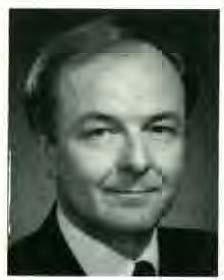
Researchisaimedat correcting tbegenefunctions
thathavebeenlostinthecellsofanimalswilhgenetic diseases.Theinvestigators willisolatethenormal gene and, through genetic engineering, constructamodified versionofthegenethat willassureitsnormalfunction inthedefectivecells.Ininitialstudies,scientists will takecellsfromananimalpatientandgrowthemio culture_Then, whatscientists call"anengineered normalcounterpan''tothedefectivegene will be transferred intothe cells. The correctedcells willthen be returnedtothepatient.

Sinceanimalshavemanyofthesamegeneticdiseases ashumans,theresearchjsexpectedtoleadthewayto newapproachestotherapy foravariety ofhumanas well asanimal geneticdiseases.The first priorityofthe research willbeanumberof life-threateningorseJ'iously debilitatinggeneticdisordersfor whichno effectivemethodortreatmentnowex.ists.
Thegrouphasbeenworking forseveralyearson treatmentofdiseasesthatinvolveenzymedeficiencies. Onejsmucopolysaccharidosis, adebilitating andsometimesfataldjseaseofbothchildrenandanimals.
thelAMS Company.
Annual Sytnposium.
...
he 18thAnnualSymposium JOur �teri11al'ia11 and Your Dog was heldonJanuary 30, 1988, atthe Veterinary HospitaJ of the UniversityofPennsylvania, Philadelphia. Thecve.nt was supported byacontribution from Dr. Darryl N. Biery, professorof radiologyand


Signals of Cancer
Dr. StuartC. Helfand, assistant protessorof medicine, discussedcancerinthedog. Hepl)inted outthat dogsdevelopdiversetormsofcancerandthatmanyof thesetumorsarequitesimilartothoseofpeople. It is estimatedthatapproximatelytwomilliondogswillbe diagnosed withcancerthisyear.Onein25dogs will developamalignancy.Ontheoncology(�,;<�ncer) service at VHUPthereareabout2,000patient visitsperyear.
F'Mthemost part, thecausesofcanineneoplasiaarc unknowns. Certain riskfactorshavebeenrecognized for anumberof tumors, however, and severaltypes of tumors areknownto occur more frequently inaparticularbreed. Thislatterobservation suggests thatsome cancersarefamilial,thatis,occurringmore frequently in certaW familiesthanprobabilitywouldsug.,oest.This doesnot meanthatthetumorsareinheritedas numerousenvironmental mc ors must be consideredas well. Atthi!>time,theroleofgenetics is unclearinthe etiologyof cancer.
Some examples ofriskfactorsinclude:
• ultraviolet light andsomeskincan(.;ct,
• increased incidenceof mammary tumors indogs thatarenotspayed,
• tbe syndromeofmultiplenailbed tumorsin blackcoateddogs,
• in(.;rea.sed incidenceofskin cancer innonpigmentedskin,
• incteased incidenceofanalsacrumorsandlipomas infemaledogs,
•increasedincidenceof perianal and bonetumorsin maledogs.
• increasedincidence ofbonecancerin largeand giantdogs,
• llistoryofachronicinflammatory process atthe siteofacancer,

chairman,Departmentof ClinicalStudies,Philadelphia, welcomedthecapacity crowd whkhincluded representatives ofthecaninepress andtheAmerican KennelClub, as well as membersoftheSchool'sLadies CommitteeandtheBoard ofOverseers.

Dr. Bierysaidthatmorethan22,000patient visits are madeannuallytoVHUP, thatover50percentofthe casesarereferred, andthat dogscompriseabout85
percentofthepatientsatthehospital. Hementioned that the facilityisstaffed by80 veterinarians, faculty, interns, andresidentswho areassistedbythe students of theseniorclass.
Thesymposiumspeakerscame from thespecialtiesof ncu.·ology.internalmedicine, dermatology, and oncology. Following are summariesoftheir presen ations
• increased incidenceofall cancersindogs 10 years of age andolder, and
• decreased mammary cancer in unspayeddogsthat were keptleanduring their growthyears.
Asinpeople, ear1ydetectionof canine cancerisvital. By thetime atumorgrowslargeenough toberecognized(about grape-sized), it already contains 1,000,000,000cells!Wbenthe tumorissmall,iliere ex.iststhegreatest chance forcompletesurgicalremoval. There isalso adecreasedchanceforthetumortohave spread (metastasized). Itis imperative that dogowners bring suspicious lesionstotheattentionofthe veterinarian atthe earliest possible opportunity
Watching a tumor grow for awhilebeforeseeking veterinary attentionisrisky because duringl.hat timethe tumormay invade deeply, makingits completesurgical removal impossible. Thereis also an increased chance formetastasisas tumorsenlarge.
Sooner orlater,amalignancy willaffect therumorbearingdoginsuchawaythat thepet owner will observeanabnormality Thedogmay show anonspecificalterationinitsusualconstitutional make-up (constitutional signs)suchaslossofappetite, weight loss, andexercise imolerance.
Other signsmay berecognizedas dysfunctionof a specificorganand include difftculty ineating, swallowing,urinating, ordefecating,bleedingor discharge from any body orifice, bleedjngintotheskin, changein thecharacterof thebark, persistant cmtgh, an abnormal swellingthat ispersistent orprogressive, a non-healing wound.fouloralodor,persistenrvomiting ordiarrhea, and black tarry stooL
The diagnosisofamalignancyis mostoften confirmed withabiopsy,themicroscopicexamination ofatissuesampleby a veterinary palbologist. The tissuecanbeobtainedinoneofseveral ways, including aneedlebiopsy, an incisional biopsy, or anexcisional biopsy.ln110 case should a masseverbe removed without a biopsy being done. Besidesidentifying the
rumor type, thepathologist canalso supply information abootthecompleteness of theexcisionbyexaminingthe specimen'sedges. Itisdesirableto identify aborderof normaltissuearoundtheperipheryofthetumor.Occasionally, abiopsy willnotbediagnosticand asecond (or third) biopsy maybenecessary toconfirmthediagnosis ofcancer. Thisisbecausetumorsfrequently elicit inflammatorytissuereactionsaround them whichmay bebiopsied instead ofthe actualtumormass.Withthe nakedeye. it is frequentlynotpossible todifferentiate thistypeoftissue fromthetumorproper.
Caninetumors most frequently arise fromtheskin, mammaryglands, lymphnodes, ora!cuvity, bones, and nasalcavity Tumors arenot confinedtotheselocations, however, and can arisefromanysiteinthebody.
Skin tumors comprisethelargest group of neoplasia inthedog. Most arebenign, and it is notunusual for old dogstohavenumerousskin lumps andbumps arising from sklnglandsandhair follicles. Malignanciesoftheskinincludethemastcelltumor,squamous cellcarcinoma,andmelanoma.Brachycephalicdogs (boxer:s. bulldogs.Boston terriers, etc.) havethehighest incidence ofmast cell tumors.
Mammary tumorsare also a heterogenous groupwith nearly50percentbeingmalignant. Surgeryremainsthe treatmentofchoice,andspaying a bitchbeforeherfirst heatalmostalwayspreventsthedevelopmentofthis formofcancer laterin life.It ispossiblefor adogto have a benign tumor in onemammary gland andatthe sametimehaveamalignancyin another Allexcised mammary tumorsshouldbebiopsied.Thedachshund andthecocker spaniel havefhe highestincidenceof mammary malignancy.
Malignantlymphomajs a systemiccancer frequently recognized by enlarged lymph nooes inthethroat, over the shoulders, inthe groin, and behind theknees. This Ulness can imitate many othea:- diseases, but abiopsy will readilyconfinnthedjagnosis. Thereis ahigher incidence of lymphoma in the ooxer. basset hound,
Scortishterrier.Airedale, St. Bernard, bullmastiff, bulldog. andgoldenretriever.Of allthe forms ofcancer treatedby veterinarians withchemotherapy, lymphoma isthemostresponsive. Animals frequentlysurvivefor 1 totlh years when treated withanticancerdrugs and immunomodula.ting agents.


Oral tumorsare usually malignant The mos( common typesarethesqu.1mous cellcarcinoma, fibrosarcoma. andmelanoma. Someof thegreatest treatmentadvanceshavebeen madeagainstthese tumorsinthelastdecade withtheadvent of newer furms ofsurgical removaland faciaJreconstructivetechniques. Many dogshavebenefitedfromradiationof thesetumors.
Osteosarcomaisth�: mostcommon formof bone cancer. lt usuallydevelops in ahonein oneof thelegs but canarise withinany bone of thebody. Largeand giantbreeds ofJogs such as theSt.Bernard, great Dane, Lrishsetter,Doberman pinscher,Germanshepherd, and golden retriever develop this formof cancer mostoften.
Limbamputationhasbeenthetreatment of choice. butsinceIJlistumor has usuallyspreadtothe lungsby thetimeof diagnosis, dogsdie ofmetastases.More recent treatment� haveinvolved chemotherapy andbone transplantsto try toprc.�crvethe limb of theaftlicted dog. Althoughstillconsideredafatal illness, many dogs aresurvjvingtooneyear with these newer therapies. Previously the average survival time bas been41h months.
Nasal tumorsareseen moreofteninlong-nosed dogs suchas thecollieandShetland sheepdog.These tumors are locally invasive andhighlydestructivetostructures ofthehead. Pacialdeformity ispossibleif thetumor breaksthroughafacialbone. Dog� willusuallypresent with ahistory ofmucoid to bloodynasaJ dischargefrom onenostril, noisy respiration, andsneezing. Mostdogs arcnotcured, but treatment consisting of surgery and radiation therapy hasprolonged survivaJ6mesfur as long astwoyears.
The treatment ofdogs with cancer continuestohea major challenge in veterinary medicine. Thediscipline of veterinary oncology is stilla young one whichis growing rapidly. Advancesarc beingmade with chemomer�py, radiation therapy and surgery, butsome ofthe mostinnovativeendeavors will lieinthe area of immunotherapy.Veterinarians. withthehelpof the petowning population, will servea vital role in investigatingoew cancer treatments fordogs that will hopefully have benefits fur people as well.
The American Kennel Club has supported oncology researchhereatahe SchooJ.
Seizures and More
Dr. BetsyDayrell-Hart, lecturerinneurology, discussed seizures. "It is not difficultto provoke seizuresindogs." she said. "Dogsandpeoplehave seizuresmuchmorefrequently thanany other species. Wedon'tknow why," About2 percentof thepatients seen atVHUP are brought because of seizures.
''Seizures normally arenotlife-threatening;' shesaid, ''but they are frighteningto the observer. We think that thedog isnotin pain while having a seizure. andthat it is completely unawareof the event. Afterwards, itoften isdazed anddisoriented.'' Dr. Dayrell-Hart said that many eventsmaylook likeaseizure butinrealityare nor. Weakness due to muscleor nervediseasemay appeartobeaseizure. Metabolic disease cardioV'dSCUlar disc:1sc and internal bleeding, too. maycause seizure-like episodes.

Seizureshavemanycauses andtodetermine their origin, tbeveterinarian mustaskquite a few quc.�tions to obtainadetailed history. "Werely heavily on the owner'sobservations, what did thedogdo, howlong did the episode last, and what was thebehavior afterwards.''
A seizure iscausedby abnormal activityin the cortex,thetop part ofthebrain.During anoccurrence. nervecellsinthe conex fire in anunorganized"''llY and causeresponses in therestofthebody. Onemay observemotoractivityinthe legs. autonomic activity such asdilatedpupilsor rapidheanbcat, salivation, urination. and defecation. Theanimalisunconscious andunawareof itssurroundings oractions. Some seizures presenta behavioral piclure: the animalmay runincircles, biteattheair, or lick thefloor. Again, thedogis norawareofitsactions.
"Seizures tend to occur in phases. Usuallythereisa 'warning phase:.....theanimalmay berestless orseek reassurance.'' she said. "Theactualseizure, orictal phase. normallylasts onlyt1 short time, 30secondsto a minute. Thepost ictalphasecan vary in durationand symptoms. Someanimalsmaybe blindfor aperiod ranging fromhoursto weeks.somemaybark, others may wantto eat ordrinkravenously. ln mostcases, the post-ictalphaseisshort andthedogisback tonormal inarelativelysbonrime:·The veterinarianbasto determine whether theseizure is symptomatic, dueto a disease. toxins ortumors,or whether it isidiopathic, whereno cause canbe found.
To make a diagnosis, a complete history istakenand a thoroughphysical exam is performed a.s wellas v-Miousblood tests andurinalysis. The age of onset of seizure activityisimportant. Symptomaticseizures can occurat any age; idopnthic seizure..<� duetoepilepsy usually occurinanimalssix monthstofouryears of age. Very youngpuppiesandhuntingdogsinthefield can haveseizures whichareduetohypoglycemia. Brain disease, suchasinflammationor viral infection, can causeseizures inanimals ofany age. In older dogs seizures areoftencausedby tumors.
(f thetestsshow underlying disease, theanimalcan betreated and theseizures usually will stop. If no underlying diseaseis found, thenthe veterinarian must presumeidiopathic epilepsy. ''Thesedogsarehealthy and perfectly normalbetween seizure episodes;· she said. ''Itissuspected that epilepsy isinheritedand that seizuringdogscanproduceoffspring whichmay se.izure also. We would liketobavea test whichcouldshow us whichanimalswillseizure. Somepreliminarystudies have been performed here by Drs. Steinberg and Farobachto determine which dogs seizure easily,butquitea bit more work needs lObedonebefore wecan tell
whichanimalshavea low seizurethresholdandare suspectofdeveloping epilepsy later.''
Dogs with idiopalhic epilepsy aretreated with anticonvulsants. "There areplenty ofthesedrugsonthe marketforpeople.'' she said. "but the numberofdrugs effective in dogs is limited bec.1use dogs eliminate drugs quickly from their systems.They dothisfourtimes as fastas people."
Phenobarbital isonedrug whlch worksquitewelL It has a fairly long half-life(time it takes thebodytoeliminate half the dose) in the dog andithas beenused for quite anumber of years. However, thehalf-lifeofthe drugvariesfrom(logtoc:Jog, soeachdosemustbe individuaUy determined withthehelpofrepeatedblood tests. The half-litemay changeas!heanimal'ssystem becomes accustomed tothe medication, thusthedogs mustbe closelv monitored.Phenobarbitalisa barbit11rate whichdepresses the function of thebrain. Other drugs, suchasBenzodiazepenes, workona brainarea whichsuppressesfunctionin otherparts of thebrain.Toobtain themostbeneficialeffectfor an animal, veterinariunsmay utilize morethanonedrugto preventseizures. particularly irthey occurin clusters. "Oftenseizurescannotbestoppedcompletely:' she said. "Wehope to reduce theirfrequency andseverity with these drugs.Oncenn animal is on them, theyhave tobegivenfor Jjfe.'' Insome ca.�es currentdrugsdonot work. Then the veterinarians herecanuscnew drugsro try to help the animal Acupuncture, too, basbeenused withsomesuccesstotry to control seizures inalimited numberof dogs.
Dr. Dayrell-Hartthend1scussedanumber ofother neurologicdisorders. "Rabiesisadisease weallhaveto bemuchconcerned about," shesaid. "Itisspreading anditis preventable in pets through vaccinations. Ownersshouldhavetheir�ogsand catsinoculated. Remember, the only wayto diagnosethediseaseis througha pathologic examination ofbrain tissue from a dead animal. If theanimalhashad regularvaccinations, then the question of rabiesshoutd.not ariseshould abnormal hehavior occur.''
Dr. Dayrell-Hartthen brietly spoke about spinalcord disease, disc collapse, and fibrocartilaginousemboli. These disorders areoften diagnosed throughamyelogram or a CT-scan. Many animals canbehelped, thoughthe recoveryperiodmaybeslow.TheCT-scanis alsousedinthediagnosisof brain tumors.Currently, about six brain surgeries andsix radiationtherapiesare doneatVHUPannually."Wehave found thatwecan do a lor ofgood withthese proce-dures and give theanimals additionaJ rime to live a normallife." she said. ''The dataat thispointaretoo small to proje.ct theoddsfor every animalpresented."
During thequestionandnn!\WCrperioditwas asked whetherbrain tumors orspinal cord disease arc inherited.Dr.Dayreii-Hart replied that not enoughdata have been collected about the occurrenceofbrain tumors andIJlat certain breeds appeartohave a predisposition todeveloping spinal cord disease. She saidthatc:Jogsonanticonvulsant medicationshouldnot bebredjftbemedicationisgiventopreventepileptic seizures; if the convulsionsaredueto other factors, the dog couldbe bred, thoughtheeffects ofthedrugs on the fetusare notknown.
She mentioned that vaccinations are notrelatedto seizuresbutthatdogs withclinicaldistempermay develop seizures at a later date duetothedamagedone bythedisease. Shealsoexplainedthatphenobarbital can affect theliver. anddogsonthis drug needtohave theirliverfunctionevaluated regularly. She explained thatanEEG cannotbedoneondogs astheanimal would havetobeane!lthetized, which woulddistortthe reading!�ofthe test. Shealsosaid thatitissateto
perform surgery on a dog which has had seizures as long as the veterinarian takes special precautions during the anesthesia.
She asked that owners he observant and make note� of what occurs while the animal is seizuring; she. also stated that if seizures last more than three minutes, the animal be brought to a veterinarian at once for treatment. During a seizure, the owner should be sure that the animal cannot be injured by fulling furnitureor by tumbling from a ltigh place. "A convulsing dog does not swallow its tongue," she said. "Do not touch the mouth as the dog may bite you. It is completely unaware of its surroundings. It is best to leave it alone and then 1et it rest quietly once the seizure is over."
Epilepsy research in the department of neurology at the School has been supported by the American Kennel Club.
Allergic Skin Diseases in Dogs
The skin is thelargest organ in the body, and more dogs are taken to the veterinarian for skin ailments than for any other medical problem. VHUP's dermatology clinic is one of the busiest places in the hospital. Dr. Kevin Shanley, assistant professor in dermatology, spoke about allergic skin diseases.
He stressed that an accurate and complete history of the onset and progression of an allergic skin disease in the patient is imperative in helping the veterinarian make the diagnosis and provide appropriate therapy. There are numerous questions applicable to most skjn diseases that a veterinarian will ask. By knowing the answers to those questions, an owner will be better able to characterize a dog's skin disease and help the veterinarian treat the skin condition. Some of the questions asked are:
Howoldwasthedog·whentheskincmulitio11 began?
Wltatdidtheskincondition looklikeinitip/ly?
Howhastheskinconditionprogressed?
Istheskindiseaseintermittentorconstant?Seasonal ornon-seasonal?
Areotherpetsinthehouseaffected?
Arepeopleinthehouseaffected?
'Wnattherapies (topical,oral, injectable)havebeen used?
Whatistheresponsetothetherapies?

Istheskinconditiona"rashthatitches"oran "itch thatrashesr
In whatenvironment dot�sthedogspendtime?
Whatisthedog'sdiet?
Doesthedoghaveanyothermedicalproblems?
There are a number of spedt1c allergic skin diseases. Flea allergy dermatitis (may also be referred to as flea bite dermatitis or flea allergy) is the most common allergic skin disease in dogs. It frequently presents as the sole cause of a dog's itchiness but can also be. present with other allergic skin diseases and complicate the diagnosis and treatment. There is no breed predilection. The age of onset is variable, but is most common in dogs that are two to six years old. It rarely develops in dogs Jess than six months old. The pruritus (itch) is most severe from mid-summer through the fall (July through October). Since 11eas are adaptable, they can live indoors year round and cause pruritus during all seasons of the year.
The pruritus and skin disease often worsen as the dog ages. Dogs frequently chew themselves in a ''Christmas tree or Florida triangle" pattern, that is, starting at a
point in the middle of the back and spreading out towards the rear legs, rump, and tail base. Usually hair loss is present due to broken hajrs, and numerous small "mosquito-bite" type sores are found. Fleas only spend 15-20 minutes a day on a dog. It is very difficult to find fleas on most dogs, particularly in long-haired or darkcoated breeds. For every flea found on a dog, there may be 10-100 fleas in the dog's environment (house and yard). Most (all?)dogs with itchiness due to flea bites arc allergic to a component of the flea saliva. This allergic response varies tremendously among dogs. Some dogs can tolerate numerous fleas with minimal skin disease, whereas other dogs are exquisitely allergic and may develop severe skin disease from one or two flea bites every several days! The important points to remember are to treat long-term (months-years). to treat frequently (depending on products used), to treat all dogs in the household, and to treattheenvironment. Atopic dermatitis is also called atopy, allergic inhalant dermatitis, and atopic disease. It is seen in all breeds. Terriers (especially cairns, wire-haired fox, west highland white, Scottish, and Boston), Dalmatians, retrievers (golden and Labrador), Lhasa Apso, buUdog.s, miniature schnauzers, and pugs are more predisposed to develop the disease. Cocker spaniels, dachshunds, German short-haired pointers, and poodles have a decreased incidence of developing atopic dermatitis. Dogs are usually one to three years old when atopy starts. It is uncommon to develop io a dog younger than six months or older than seven years. Pruritus is the .key feature and is usually seasonal jnitially but progresses to be year round in 75 percent of dogs.
The degree of itching typically worsens with age. The fuce, feet, and underside are most often affected. Asthma and hay fever signs are rare. Allergy skin testing is the best way to diagnose the specific allergens (pollens) that are causing the pruritus. Two new blood tests (RAST, ELISA) have become available commercially; however, their accuracy is unproven and they are still controversial tests. Approximately 50 percent of atopic dogs are also allergic to fleas. Therapy of atopic disease involves using a vaccine to hyposensitize the animal and thus reduce the itchiness caused by the allergies.
Food allergy as a cause of skin disease is much less common than flea allergy dermatitis and only approximately 1/lOth as common as atopic dermatitis. There is no age, breed, or sex predilection associated with food allergy. Less than 10 percent of dogs with a food allergy will also have vomiting and/or djarrhea associated with the skin disease. The pruritus is non-seasonal and at times quite severe.
Food allergy usually is associated with one component of the diet and is not associated with a particular brand of dog tood. Beef is the most common offending allergen. The distribution of pruritus and skin lesions is tremendously variable in food allergic dogs. It may mimic flea allergy or atopic dermatiti�. Food allergy can also be generalized over the entire body or be localized tojust the ears or around the eyes.
There arc no blood or skin tests that can diagnose a food allergy. The best method is to feed a hypoallergcnic diet for at least two to three weeks to sec if the skin disease disappears. Simply changing brands of dog food is not sufficient. Lamb and rice may be used as the hypoallcrgcnic diet for most dogs. After a diagnosis of food allergies has been made, the specific offending allergen must be identified (for example, beef, pork, chicken, wheat, soy, or preservatives).
Scabies is a disease caused by a microscopic mite (parasite) Sarcoptesscabei which burrows through the superficial skin. It is similar to flea allergy in that there is an allergic reaction to the secretion and/or excretions
Christmas Tree Pattern
of the parasite. The scabies mite is contagious from dog to dog and can transiently affect people. It usually causes intense pruritus and usually affects the ear margins, elbows, hocks, and ventrum (underside).


There is no seasonality and any age, breed, or sex can be involved. The severe itching rapidly leads to hair loss and red, irritated skin. Diagnosis is by identifying mites on skin scrapings. However, the mites are usually very dift1cult to find and, therefore, any dogs suspected of havingscabies should be treated. Various treatments are available and usually provide dramatic improvement within two to four weeks.
Allergic skin diseases are very common and tremendously variable in their presentation. They also predispose dogs to developing bacterial skin infections and seborrhea, which in turn will increase the itchiness and help create a vicious cycle. By being a keen observer, the owner can help the veterinarian diagnose and treat the dog's skin disease.
During the question and answer period Dr. Shanley stressed the importance of reading tbe labels on dips, powders, and shampoos and to follow the directions carefully. He also indicated that 11 is best to obtain antiflea preparations from the veterinarian as he is familiar with the animal's state of health. He also cautioned against using any preparation containing insecticides on old, sick or very young animals.
Canine Esophageal Diseases
"The incidence ofesophageal diseases in dogs is relatively low when compared to other gastrointestinal disorders, "said Dr. Robert Washabau, lecturer io medicine. "We see about one such case per 2,500 admissions." However, esophageal diseases are very serious and an accurate early djagnosis and prompt medical and surgical treatment are impemtivc. Reflux esophagitis, for example, is a readily treatable disease but, if unrecognized or untreated, may progress to esophageal ulceration or stricture formation.
The esophagus, a hollow muscular tube, transports food from the mouth to the stomach and is not involved in digestion or secretion. A major portion of the esophagus is located in the thoracic cavity and is difficult to examine andimpossible to palpate. The veterinarian, therefore, must rely on radiographic or endoscopic examination to make a diagnosis of an esophageal disorder.
Oneofthe most important factorsin arriving ata diagnosis is adetailed history provided by the owner. The veterinarian and pet ownermust initially differentiate between a vomition disorderand aregurgitation disorder. Regurgitation is seen with esophageal disorders and is the passive evacuation ofingestedfood without abdominal contractions. Vomition typifies a gastrc or intestinAl disorder and is an active process wirh abdominal contractions; the vomitus appears partially or completely digested. Regurgitation is the classic sign ofan esophageal disorder, but the animal may presentwith other signs. Oropharyngeal and esophageal disorders interrupt the swallowing process resulting in dysphagia (difficulty in swallowing)
Multiple swallowing attempts may be observed as the animal attempts to pass a singte bolus offood. Hypersalivation is sometimes seen as a sign of severe esophagitis or foreign body ingestion. Painful swallowing (odynophagia) is also a sign ofesophagitis and may be manifested by crying/yelping during a swallowing episode. A change jn feeding behavior is also sometimes seen with esophageal disorders. Animals with a painful e-Sophagitis may avoid food completely while animals with megaesophagus may have aravenous appetite. The fullowing tableoutlines someofthe differences between oropharyngeal, esophageal, andgastric disorders. ( Seetable I. }

Physical examination isan important panofthe diagnostic work-up ussome esophageal disorders, such as megaesophagus, are assodated with a systemic disease. Anevaluationofthe oropharynx and thelower gastrointestinal tract is also included. Survey radiographs ofthe neckand chest are routinely obtained, and abarium contrast study will provide additional information on e.sophageal diameter, motility, and presence ofdiver· ticula or gastroesophageal reflux. A flexible fiberoptic endoscope is sometimes used in the diagnostic process. Endoscopy pennits directvisualizationofthe esophagus and is also used to retrieve foreign bodies and perform biopsies
Oneofthe most common esophageal disorders seen by veterinarians is the 1ngested foreign body, frequently bones or cartilage, bur sometimes fishhooks, and in one parienl bere at VHUP a small steak knife. (See Fig. 1) These animals usually havedifficulty swallowing, salivate exce.��ively, and regurgitate frequently. Foreign bodies are a medical emergency and tbe animal should have immediatecare. Complicationsofuntreated esophageal foreign body areesophageal perforation, me.diastinitislpleuritis, and esophageal stricture.

Esophagitis is anotltercommon esophageal disorder seen in !he dog andcat. It can bethe result ofthe ingestionofcaustic substances, fureign bodies, or reflux of gastric juice into the esophagus. Most animals will respond to briefperiods offasting and administration of antacids.
Vascular ring anomalies, such as persistent right aortic arch, cause a proximal esophageal obstruction in young animals. (See Fig. 2) Surgery is the recommended treatment for this disorder, and most animals have a good prognosis if treated early. As with other esophageal disorders, the complications and prognosis are worse ifdiagnosis <md treatment arc delayed.
Megaesophagus, an enlarged esophagus, may occur as acongenital or an acquired defuct. The congenital defect is seen in German shepherds, great Danes, Irish setters, minjature schnauzers, and wire-haired fox terriers. Many of these animals improve spontaneously with time, but others fail to thrive. Theacquired form ofthedisease may occur in anybreed and usuallyhas
Persistent right aortic arch.
Time offoodejection
Characteroffood ejected
Number of swallowing attempt:)
Visible evidence ofbolus passing in cervical esophagus
Abilitytodrink
Pain on swallowing
Associated signs frequently seen
Pharynx
and Upper
Treatment ofmegaesophagus is difficult and controversial. Current treatment recommendations include identifying and treating any underlying disease, elevated feedings to permit gravity-dependentdrainage of the esophagus, motility modifiers to hasten the passage of food, anlacidsto treat secondary reflux esophagitis, and systemic antibiotics if secondary pulmonary infection is present. The disorder cannot be corrected surgically. Dr. Washabau indicated that many patients with the disorder do not improve, and many pel owners will elect euthanasia
Esophageal strictures usually result from untreated esophagitis or esophageal neoplasia. The stricture acts as an obstruction tothe passage offood, and the animals regurgitare frequently. Strictures are easily identified by barium esophagram Cancer ofthe esophagus is rare, and the prognosis for such tumors is poor. Other strictures may be treatedby dilation procedures (bougienage, balloon).
Hiatal hernia, a common entity in humans, hasalso been identified in the dog. Congenital andacquired forms have been described. They are both characterized by the same signs as esophagitis. Diagnosisofthis disorder is very difficult and often requires severalradiographic studies. Many animals will not show a re�'Ponse to conservative medical treatment and, therefore, require surgery
Duringthe questionand answerperiod. Dr. Washabau stated that force-feeding may be dangerous, particularly for animals with esophageal motility problems. He also mentioned that liquid diets can be of benefit to animal$ with megaesophagus and that animals with other esophageal disorders benefit fromfrequent small meals

Dr. Washabau is also a Ph.D. candidate in the department ofcomparative medical studies; he is supported in part by the American Kennel Club.
Esophagus
Delayed. possibly hours
Undigested
Stomach
Delayed, possibly for hours
Usually single
Present, maybe prolonged
Normal
Frequent
Dyspnea, cough
Exercise, fuod consistency
Can be partjally digested, bilestained, and with acid pH SingJe
Present
Nonnal Absent Retching
None
Large Animal Dermatology
continuedfrompageI

However, despite all good care, it is hard for horse and livestock owners to totally prevent their animals' exposure to insects, parasites, and bacteria. "P'Masitic dermatoses are very common in Large animals," said Dr. Shanley. ''Flies, chiggers, and gnats are all around the stables and pastures. as arc various species ofmites. Each ofthese parasites causes specificproblems in the different species oflarge animals."
Mangein a horse is a far less serious problem than a mange outbreak in a herd ofswine. Whilethehorse will show signs ofthe disease at themane, ears, and the tail and will try to alleviatethe itchby rubbing these areas, mange in pigs causes greater damage. The animals will rub themselves raw, doing considerable damage totheir hides, and they will lose weight, cutting down on the furmer's meatyield Mange in pigs iscausedby the sarcoptic mile, which burrows into the skin. The disease is highly contagious and can spread quickly through a herd. Treatment consists ofdipping or sprayingoftheanimals and treating the environment.
affucts cattle and horses, though economic losses due to damage to meat and hides are greater in cattle. The femalelays itseggson the hairs ofthe lower leg. The eggshatchand the larvae penetrate the skin and migrate through the body to tissues nearthe spinal cord. Here they mature and eventually emerge to pupate and becomefiie..c; They cnuse bumps with a breathing hole. Ifthey are removed, care must be taken that theentire grubis removed. otherwiseanaphylactic reaction may result.
Lice infestations are seen primarily in the winter months. They cause itching, and the animals can inflict self-trauma from rubbing. In calves, hairballs may result from ex:cessive licking. In older cattle, milk production may fall. In pigs, lice infestation can result in lower weight gain and extensive hide damage. The disease can have a severe economic impact.

has a high \\taxcontent werenot as susceptible.
Ringworm is another common skin disorderoflarge animals."Any bald spot in a Large animal should be checked fur ringworm," saidDr. Shanley."This fungus is widespread." It can be spread fromanimaltoanimal and also indirectly through groomingequipment, riding tack, and clothing. The fungal infection can be on the skin, but itcan alsoaffect the hairorthe hooves. To diagnose which of the many ringworm species is responsible a culture has to be taken. Ringworm is very common in horses. It also occurs in swine, though here it is most often not treated as it does not seriously affect the animal.
The mite respom.iblc for mange in the horse is the psoroptic mite It also affects caltle, goats and sheep, though the disease in sheep has been eradicated here in the United States. These mites are quite specie-specific and cannot be spread from cattle to horses, for example. In cattle, the intense itchingcaused by the organism can lead to extensive selftrauma and even death. Another mite, the chorioptc!l mite, affects horses, c.tttle, and sheep and causes lesions on the legs Inhorses, it is often seen on the lower legs ofdraftanimals. on the fe�red partabove the hoof.

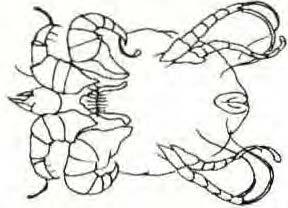
Demodecric mange, so feared by dogowners, is uncommon in large animals. As eachofthe mites responds to different insecticides, a proper diagnosis is necessary before treatment can be started. The veterinarian takes skin scrapings and examines these for the mites.
Ticks nrc ever present in pastw·e.s and woods and causebite wounds which can become infected. Severe tick infestation can cause artemia. Ticks not ooly debilitate an animal, but they alsoarecarriers ofother diseases such as Lyme disease and a number of bacterial, viral, and protozoal infections.
"Lesions caused by insects often get infected and c-ause unsightly hairloss," said Dr. Shanley. "To determine theexactcause ofsucb symptoms. theveterinarian takes a small skin plug and examines it forparasites and otherorganisms prior to treatment."
Weather plays an important role in the well-being of the skin. During a prolonged rainy season, horses can develop rain scald, a dermatophilo::;is which manifests itself with weepy and crusty sores. It affects the head, back, and lower limbs. Once the animals aremoved to dry quarters, thedisease usually disappears. Prolonged wet weather canalso affect sheep and lead to dermatophilosis Oumpy wool disease) caused by bacteria. The crusting lowers the value ofthe fleece as it discolors it. Animals need to be treated to prevent the disease from spreading in the flock. Fleece rot is another disease affecting sheep. It, too, is caused by prolonged wetting ofthe skin. Fleece rot resembles dermatophilosis, but there is no scab development or skin ulceration. Also,thesusceptibility ofan animal to this disea-;e depends on the natureofits fleece. It was found that animals with a tleece consisting ofdense regular fibersare more resistant than animals which have irregular fiber size. Also, animals whose fleece

Ringworm infection is com.tnon in confined cattle, and calves under the age ofseven months are most susceptible. The lesions"re generally hairless and not inflamed; they have a grey appearance. While they do not appear to bother the animaJ, these lesions can cause considerable damage ro d1ehide, evident only after tanning, creating an economic loss.
Flies and ticks arc also an importantcauseofskin lesions Culicoides, atinygnat, alsocalled ··no-seeurns," wiiJ attack horses and cause an intense itch. Horsescan developan allergy to these pests, similar to a flea allergy in dogs, and they may havetobe treated to prevent extensive damage to their skin from excessive rubbing on fences and walls.
The stable fly and otherlarge flies cause painful bites which can become infected. Insect repellent and devices which attractand kill flies greatly cut down on such injuries. Grub is another disorder caused by flies. It

Skin disorders caused by improper nutritionare another important disease category. Pigsare most susceptible to such diseases because oftheir rapid grO"-'thrateand their confined eov1ronment. Cattle fed improperrationsalsocan develop skin djsorders.
«The skinis a good barometer ofthe animal' s general health;' said Dr. Shanley. "Often. susceptibility to chronic infections indicates that more thana skin disorder is involved." Horseand livestockowners should checktheir animals' skin and seek a diagnosis when lesions areobserved. "It iseasier to treat it when the disease process isjust beginning; itis more economical, too." The new dermatology clioic forlarge animals at New Bolton Center campus will provide a valuable service to thehorse and livestockowners in the area.
Cu.licoide$hypersensitivityin a horse. Cowwithringworm infection.Pseudorabies Studies
seudorabies is asevere economic problem in parts ofPennsylvania. The disease, causedby aherpesvirus, primarily affects swine, and itcauses death inyounganimals, abortions, and increasednumbersofstillbirths.
Pseudorabies istransmissiblefrom &wineto otherlivestock, such as cattle and sheep. For these animals, the effects are devastating as they succumb to lhe virus after suffering from intense itching andencephalitis. Pseudorabiescan alsoinfect cats, dogs and wildlife, causing death. Animalswithpseudorabies, exceptpigs, often exhibitbehaviorresembling thatof rabidanimals such as selfmutilationor stupor, hence the nameofthe disease.

"In pigstheinfuction is usually subclinical, andonly whenlitter deaths, stillbirths, and abortions occur does the farmer suspect something amiss," said Dr. Daniel Cohen, an epidemiologist attheUniversityofPennsylvania School ofVetcrin<try Medicine. "Pseudorabies is areportabledisease, and afflicted swineherds are quarantined andoften slaughteredto preventthe infection from spreadingto other farms. It causes an immenseeconomic hardship to the farmer."
Despite quarantine, depopulationand otherprotective measures, manyfurms in certain areasofthe state become reinfected shortly after new stock is introduced. "We decidedto investigate the reasonsfor such reinfections." Dr. Cohen said. "Astudy wasdesigned to determine whether wildlife in the area andother animals on thefarm might notharborthe virus, acting as a reservoirfrom whichthevirus could be reintroducedintothe swinepopulation. The findings so far havebeen quite interesting.''

Theresearchers discovered thatabout 17percentof the catstestedin the affectedareaswereserologically positive, indicatingthattheyhadcontactwith thevirus andsurvived it. Thiscontradict" previous findings. It hadbeenthoughtthat all animals, except pigs, couldnot
New Appointments
Dean EdwinJ. Andrews has announcedtheappointment ofBruce A. Rappoport asassistant dean foradministration, NewBolton Center. Mr. Rappoport, whojoined the School lastyearas director oftheGeorge D. Widener Hospital for large Animals, has overall responsibility for New Bolton Center, the furmthere, andthe WidenerHospital.
Dr. Charles D. Newton, professor oforthopedic surgeryandchief, Section ofSurgery, has been appointedassistantdean forstudentaffairs, effective July l, 1988. Dr. Newton will beresponsible for recruitment, studentaid, and student affairs. Additionally, be will maintain hiscurrent roleas directorofcontinuing education.
Ms. A'lhra Markowitz has been appointed associate directorofdevelopment. She is overseeingthe Alumni andFriends programs and is responsible for implementing a broad-based fundraising program at the Philadelphia campus. Inaddition, Ms. Markowitz will continuetosupervisethe Continuing Education Program.
surviveapseudorabies intection The researchers found that 12percentofraccoonstestedalso showedpositive antibodies. Squirrels, dogs, mice, andratstestedwere all negative.
Atthis point it isnot clear whethercatsorraccoons shed thevirus and thus infect pigs orother livestock. So furthe study has raised many more questionsthan ithas answered."We are looking for carriers," said Dr. Cohen. "We don'tknowhowthe virus gets intothewildlife population. Dotheanimals come in contact with it throughmanure spread on fields? Do they get itthrough directcontact with infected swine orbyingesting infected rodents? Wedon't know."
This yearagenetically engineeredvaccine will be available. "Antibodies resulting from thisvaccineare clearly distinguishable from thosedevelopingas aresult ofthe disease;· saidDr. Cohen. "We will now test wildlife near vaccinated swine herdsand look forantibodies. Ifacrossover ofthe vaccine virus occurs we. willbe abletodetect it." Anotherproject is toisolate the virus fromwildlife. "We have alot ofworkaheadof us, but ifwe can identify a reservoir in affected areasin wildlife orcats, precautionscan be taken to minimize contact betweenlivestock and these animals."
Thestudy is being supportedbyagrantfromthe PennsylvaniaDepartmentofAgriculture.

Henry Bower Dies
M'l Catherine C. Larmore has beenappointed associate director ofdevelopment for New Bolton Center. She is responsible fordevelopingand implementingacomprehensive program offundraising activities tor New Bolton Center.
Mrs. Helma N. Weeks has beenappointeddirectorof communications. Mrs. Weeks handles media relations at VHUPand NewBoltonand will overseethe School's pubIications.
HenryBowerdiedatthe ageof90 inJanuary. A graduateofthe University (W'18), Mr. B<}wertooka lifelongkeen interest in Peon. In 1981, he endowed the Henry and CorinneR. BowerChair in Medicine atthe School ofVeterinary Medicine. Mr. Boweralsogave Penn Bower Field, abaseball diamond, and endowed the Henry Bower Professorship in Entrepreneurial Studies.
Mr. and Mrs.Boweralwayshaddogsandowned wirehaired fox terriers, Scottishterriers, and great Danes. For a number ofyears Mrs. Bowerbred Scotties. Theirfirstcontactwith theVeterinary School was in the 1940s when Mrs. Bowerbrought adog tobe treatedatthe hospital.

After graduation in 1918, Mr. Bowerjoinedthe new airarm ofthe Marine Corps and became a lieutenant. In 1919, hebeganworking forthe Henry BowerChemicalManufacturingCo. at29th Street andGrays Ferry Avenue, a firm foundedby his grandfatherin 1855. He started inthe sales department and workedhiswayup tobecome presidentin 1939, aposition he held until 1967 when the company was sold.
Mr. Bower is survivedbythreenieces.
Second Century Fund Tops $35,000,000
he Second Century Fund cominues to grow! Through the generosityof our many friends and supporters, the total amount accumulated by March I, 1988, reached $35,073,000. Over the past four months, a number of important commitments were made that support educational and research activities. add to the School's endowment, and further a set ofcapital projects Endowment is the most critical areato provide forthe School's future. Several recentcontributionswill support new scholarship fundsand abook program for outstanding,butneedy students. We gratefully acknowledge the generosity of Mr. EberhardtLeSchin and Mr. Roy A. CouJtfortheir supportofswdent aid. Mr. and Mrs. Cl.inton Galbraithmadean additional gift to the Dr Charles W. RakerProfessorship in Equine Surgery. Because ofthe vision and generosity of these and many other indiviuuuls, Penn continues its nationwide leadership among veteriJaary sch<Jols in the number of endowed professor!:hips
Jn addition to these designated gifts for endowment, the School's administration placed several unrestricted contributions into endowment funds The estate of Marie A. Moore provided a bequest to establish the Marie A. Moore Cha.ir inHumane Ethics and Animal Welfare. An aduitional contrlhution from her estate was directed to the C. Mahlon Kline Onhopedic and Rehabilitation Center tosupport cb.e operation ofthe facility
A recent donation from Mrs. Philip Hofmann was set aside as seed money tocreate an endowmentforthe Georgiaand Philip Hofmann Research Center for Reproduction.
Marshak Roast
A dinner anti "roast" in honor offormer Dean Robert R. Marshak was held on the eve ofthe Penn Annual Conference. The friends, alumni, and faculty members numbered 250 at Ibis fun-filled evening. Speeches were made,toasts were proposed, and gifts given

The School's list of capital projects continues to attract strong tinancial backing from donors. New gifts and pledges were received for the interior outfitting and equipment needs of theConuelly Jntensive Care Unit and Graham French NeonataJ Section. Mrs. Elizabeth R. Moran, Mrs. A. C. Randolph, the American Horse Breeders Association, the estates of Mr. Sydney S. Captain and Dr. Harry Frank. and an anonymous donor all contributed generously to the project.
American Cyanrunjd Companymadea maJor donation to theconstruction of the Allam Dairy Fa�.-'ility Mr. Keith Eckel and Mr. RichardW. Newpher, Pres ident and Administrntive Secre t ary, respectively. ofthePeonsylvania Farmers' Association, supportedadditional c.apital projecu,at New BollonCenter.
TheMabel Pew Myrin Trust awarded atwo-part grclllt, tmalling $640,000, for repairs and operation of theAlarik Myrin Memorial Research Building at the New Bolton Centercampus.
A variery ofprogram supportwas received over the past four months. The most notable of these was a $1,750,000 grant fromthe Lucille R Markey Charitable Trust. This grant is partofa $3.8 mmion award to be shared jointly by the Veterinary School's Dr. Donald F. Patterson, Charlotte Newton Sheppard Professor of Medicine, and Dr. Mark I. Greeue, Professor of Medicine ofthe University's Medica] School. This project is aimed at correctingthegene functions that have been lost in the cells of animals as aresult of genetic diseases (see accompanyingarticleelsewhere in this issue).
The Southeastern Poultry and Egg A<;sociation is supporting Dr.RobcnJ.Eckroade's research inthe pathogenesis ofSalmonellaemeritidis infection in egglayingchickens. Universal High Technology Corpora-
tion awarded a grantof$75,000 to Dr. James Buchanan for research in cardiovascular grafts.
In addition to thesegrant<;, we wish to acknowledge the generous assistance of the following individuals: three anonymous donors; Ms. Helen W. Brann; Mrs. R. V. Clark; Mr. and Mrs. Henry R. C. Elser; Mrs. Muriel Frecmun; Mr Edgar H. Griffiths; Mr. M. Roy Jackson; Dr. Elinor B. Jenny; Mr. T. Lincoln Kerney; J. D. McCullough, V.M.D.; Mr. John W. Meriweather; Mr. and Mrs Hardie Scott;Ms. Mary M. Silkworth; Ms. Abby R. Simpson� Mr. James A. Smith; Mrs. Mary L. Smjtb: and Mr. OakleigbB.Thorne.


These individualsarejoined by: the American Equine Foundation: theAmerican Livestock Company; the Bucks County Kennel Club; theDevon Dog Show Association; DVM, 1ne.: the Mrs. AldinaScaifeGates Memorial Grant; the BruceJ. HeimFoundation; Hills Pet Products, Inc.; Mahoning-Shenango Kennel Club, Inc.; The Massey Trust: the New Jersey Veterinary Education Foundation; the Pellegrini Scholarship Fund; the Pennsylvania Horse Breeders Association; and the Pennsylvania Veterinary Foundation.
We extend Ollr sincere appreciation to all of the individuals, corporations, foundations, and associations fur their generous commitment to the Second Century Fund. Over the past five years, the School has strengthened its teachingand research programs, while adding new service facilities. These accomplishments are due in large measure to thecampaign's success. And the campaign's success rests uponpeople concerned about and committed to animals, veterinary medicine, and their place in contemporary society. We thank yoo. for your help
Dr. and Mrs. Donald F. Pattersonpresentaquiltdepktingthe Marshak years. The quilt was crafted byMrs.Patterson. Dr.RobertR.Marshak.Vaccination Schedules
Vaccination schedulesmayvary indifferentsituations.Theprogramusedinkennelsmaydifferfromthat recommended forhousenold pets. Followtheadviceof yourveterinarian.
Onemethodwouldbetogivethreedosesof combined vaccine (CanineDistemper, InfectiousCanine Hepatiti�. Pa.rainfluenza. CanineLeptospirosis,and Parvovirus)at eight. eleven, and fourteen weeks,with an additional P-.:�rvovirusat twentyweeks. Rabies vaccine couJu alsobegiven atfourteenweeks. Thereis noreason for notgiving Parvovirusincombinationwith other vaccines."Boosters"shouldbegivenyearly, except forRabies which isgiveneverytwoorthree years. 11zisisonJyasuggestedprogram. Insomecases, itmightbeadvisabletostantheseriesatanearlierage.
Themostcommoncauseofvaccination failureisthe presenceofmaternalantibodiesreceivedinthecolostrumforthefirst24to72hoursoflife. Thiscan interferewithsuccessful vaccinationupto 12-14weeks forCanineDistemper and 18 weeksforParvovirus. Puppiesshouldbe kept isolateduntil theV'dccination seriesiscomplete. Theremaybea period ofseveral daysorweeks betweenexposuretoan infectiousdisease anddevelopmentofclinicalsigns. Ifvaccineisgiven duringthisincubation period, itmaynotprevent disease.
Book Review

DogsThroughHistory, by MaxwellRiddle (Denlinger'sPublishersLtd.,Bo;t76,Fairfax, VA 22030), $19.95.
Maxwell Riddle isanaward winningwriterondogs. Heisoneofthe22judgesapprovedbytheAmerican Kennel Clubforall breedsandhasjudgedin many othercountries. Thi:sbook isnotanexhaustivetextand makesexcclletll reading.Theauthor'sforeword states that itis designedtoshow that highly intelligentpeople andtheirdogswanderedthe worldlongbeforethe beginningofrecorded ltistory.
Theillustrationsincludecaninepaintings, sculpture, anddrawingsas well as photographsofarchaeological findings. Thereisa brick(2100B.C.) withthefootprint ofadogthatwalkedacrossitwhileitwasdrying (from the UniversityofPennsylvania Museum). Rock engravingsfrom Scandinavia, Egyptiantombs, anda mosaicfromPompeii showdogs. Apaintingby JanVanEyck(ca. 1422)showsasmalldog of CairnTerriertype.
Therearechapterson StoneAgeDogs.theEgyptians,Greeks. Africa. the Romans,theCelts,Middle AgesofEurope. theArctic.Tibet. China, Japan, India, Afghanistan, Arabia, North andSouthAmerica,and Australia.
Theauthor believesthat thedomesticdogvvasbornln centralAsia.andthatdogandwolfdeveloped froman unknownPleistocenecanidthatlivedsomesixtythousandyearsago. Hestatesthatmodernwolffamiliesdo notdifferfromextinctspeciestoasignificantdegree, butthedogshows astonishingdivergencies-morethan fourhundreddogbreedsareestimatedtoexist.
Dogfanciers willfind much interestingmaterialon therelationshipofdogsandhumansaswellasdescriptionsofthetypesand usesofdogsinmanycivilizations andcountries. Thisisa booktoenjoyandtalkabout.
Warm Weather Notes
Warmweatherbringsan increasednumberof Parvoviruscases. Fliesmay carrythevirus. Remove uneatenfoodpromptlyor itmay becomecontaminated and asourceofinf ection.
Consultyourveterinarianabou1 heartv.>orm. Thiscan beaproblemwherevertherearemosquitoes. Preventive medication maybegivendailyormonthly. Alw·ayshave ablood testfirsttodetermine ifinfectionispresent.
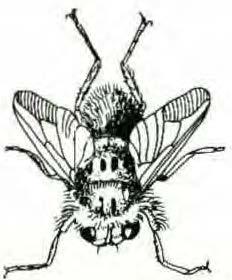
Allergies
Allergiesarequitecommonindogs. Theyusually developat6to24monthsofageandarelikelyto persistforlife. Itchinessofskin, cars, and feetare usual signs-sneezingand runnynoses usually donot occur indogs. Certain breeds seemtobeproneto develop allergies and the tendency maybeinherited. Diagnosisrequiresadetailedhistory,andskintesting maybedoneforconfirmation. Common inhalant allergensarepollen. mold!)pores, housedust, and dander. Somefoodsanddrugsmaycausereactions. In somecases, contactallergyoccurs.
Thereareseveraltypesofdrugsavailable fortreatment. Antihistaminesarehelpful insomecases. Corticosteroidsmayprovidequickreliefbutside effects limit theiruse.Hyposensitizationinvolves givingsmall dosesoftheoffendjngallergens. A treatment schedule mul!t beworked out foreach individuaL Ifthedoggoes untreated, self-traumabyscratching, rubbing, andchewingrnay leadtosevere skindamage and infection.

How Old Is Your Dog?
Alwaysread the labelscarefully whenusinginsecticides. Use theseprouucts atrecommendedinterV'dls onlyandrollowdirections. Someproductsarenotsafe forcats.
"RotSpms'' may appearovernightasreddened, moist areasontheskin. Ifnotrecognizedandtreated promptly, a seriouss!dnproblemmayresult. Askyour veterinarianto recommenda preparation tohaveavailableatthefirstsignoftrouble.
Heatstrokerequitesimmediatetreatment. Hosing down withcoldwater,icepacks, theopromptveterinary attentionwill helpsavelives. Don'tkeepanimalsio closedcars-they quickly becomedeathtrapsinhot weather. Alwaysbesurethere isadequateventilation.
Suggested guidelines forcomparingtheageof humans and dogshavebeendeveloped basedonsexual maturity, toothgrowth, ec.lt hasbeensaid that "one dogyearequals seven peopleyears,"butthechart showsthatthis isnottrue.
Age
Large breedshaveashorterlifespanthansmaller breeds. Catsageatabout thesamerateasdogs.
''Top Ten'' AKC Breeds
Thetenmostpopularbreedsfor 1987arethesameas for 1986-cocker spaniels, poodles, Labradorretrievers. goldenretrievers, Germanshepherddogs, chowchows, beagles, miniatureschnauzers. dachshunds, andShetlandsheepdogs. A record 1,187,400individualdogs wereregisteredby AKC in 1987,arecord high. The Finnishspitzbecamethe 130thbreedrecognizedby AKC,and811 wereregistered in 1987.
Therewere 105.236cockerspanielsregisteredin 1987, butattheotherendofthel.istthereareeleven breeds with lessthan 100individualsregisteredwirehaired pointinggriffons, Irishwaterspaniels,curlycoated retrievers.Sealyhamterriers. fieldspaniels, Ibizanbounds, Sussexspaniels, English foxhoundsotter hounds, American foxhounds,andharriers.

Whenchoosingabreed.don'trelyentirelyon popularity.LookatadultsasweUaspuppies.Investigate temperament and bepreparedtotakethetimeneeded forproper training. Considerthe amountofgrooming required. Makea decisiononthe basisofwhichbreed willfit intoyourlifesty]e. Understandthebreedyou chooseand bearesponsibledogowner.

Pet Sut�vey to Determine Threat of Rabies in Philadelphia
Inordertodeterminethepotential threatofrabiesto petsandpeopleinPhiladelphia, theUniversityof Pennsylvania'sSchoolofVeterinaryMedicinehas launchedastudytoassessthetotalpetpopulationofthe city. Thestudy,fundedbya$35,000grantfromthe PhiladelphiaDepartmentofPublicHealthandthe GeraldineR. DodgeFoundation, isbelievedtobethe firstcomprehensivesurveyofamajorcity'spet population.
Thenumberofdogs, cats,birds.lizards,snakes, turtJes, and ferretsownedbyPhiladelphiansshouldbe knownwhenthesurveyiscompleted inMay. Dr. LawrenceGHckman.chiefoftheepidemiology section ofPenn'sSchoolofVeterinaryMedicine.Dr. Alan Beck.directoroftheSchool'sCenter fortheInteraction ofAnimalsandSociety, andtheCenter'sstaffhave designedaquestionnairewhichuses1elephonesampling techniques toobtainpopulationestimates. Extrapolating fromthenumberofownedpets, itwillbepossibleto estimate thepetpopulationofthecity(ownedand unowned),accordingtoBeckandGlickman.

ThepurposeofthestudyislOdeterminethedanger thatrabieswould p<�setothecity, ificweretospread amongthecity'spetpopulation. "Thestudy isparticularly important becauserabiesisrising inthe United Statesandinthisregion.TheDepartmentofPub}jc Health is fundingthestudy in recognition ofthe increasingthreatofrabiesinPhiladelphiaandhas
Pennsylvania Farm Show
Thelargestfarm show inthecoulltry isheldthe secondweekinJanuaryinHarrisburg. ThehugeFarm ShowBuildingisfilledwithexhibito;ofmachinery,livestock, fruitsandvegetables,andeverythingelseone wouldseeatanagricultural fair,only more. Penn'sVet School hasbeenpartofthisbusy week formany years withabooth. Thisyearthe School'sthemewas "Research, Teaching, Service,''andphotosfrom these areasweredisplayed intheexhibit. Inadditionwe prepareda special FarmShowBellwetherandgaveout bagsand magnets. Twenty-twofacultyandstaff member.sfromNewBoltonCentercampusvolunteered theirtimeand staffedtheboothforthesixdays.
developedregulations thatrequireall dogsandcatsto bevaccinated," according to HarrietWlilliamsofthe DepartmentofPublic Health.
Therewereover300casesofrabiesinPennsylvania in 1987, andover100caseshavebeenreportedinPcnn!>ylvania sofarthisyear, accordingtotheState DepartmentofAgriculture's Bureau of AnimalIndustry. Fewerthanfourpercentofcatsand20percentofdogs inthiscountryhavebe�nvaccinatedagainstrabies.In manyca.'ics,petsreceivedaninitjalvaccinationbuthave notreceived the necessaryboostershotstoma.inta.in theirimmunitytorabies.
Puppiesandkittensshouldbevaccinatedatthreeor fourmonthsofage, andagainwhentheyareayearold. Dogsrequireboostershotsonceayearoreverythree
Scav�ma Fund Raisers
Fridaysaroundnoon, thestudent loungeintheRosenthal Buildingisahubofactivity. Students, faculty, and staffwait in linetobuyahoagiefixed by future veterinarians. Theseculinary delightsareoneof SCAVMA'smanyfundraisersforstudent activitieshere atrheSchool Studentssell T-shirts, notonlyoncampus butalsoatthePennAnnualConferenceandattheK.C. ofPhiladelphia DogShow. Thebiggestfundraiserof themall istheraffleheldduringthePennAnnual Conference. Thisyear$2,500wereraisedthroughthe saleofticketsandgenerousdonationsbyparticipantsin theConference. Prizesconsistedofcash, petfood, gift certificates, books, haircuts, dinnerfortwo, andother imeresti.ngitems.
Andwhatisdonewiththemoney?Itisusedtopay theex.pensesofalargestudentdelegationtoattendthe SAVMASymposium, heldannuallyataveterinary school. Thisyear35student<;wenttotheUniversityof Californiaat Davistoparticipate intheevent.The srudents payfortheirownaccommodations, while SCAVMA fundsraisedthroughouttheyearcover the�irfare.
ThestudentsoftheUniversity ofPennsylvaniaSchool ofVeterinaryMedicinewishtothankthefollowing individualsand companies forthegiftscontributedto theStudent ChapteroftheAmericanVeterinary MedicalAssociationRaffleheldatthe 1988Penn AnnualConference: TheUpJohnCo-; Hills Pet Products, Inc.; PitmanMoore, Inc.; SCAVMA; A.J.Buck and Son, Inc.;ALPOPetfoods. Inc.; UrbanOutfitters;


SmokeyJoe's: Tradewinds;Beecham Labor-..ttoriess DanielsPbarmaccuticals, Inc.; EdenRestaurant; IceCream; Marty's; Nautilus; RadioShack;Salad Alley Restaurant; THFPublications, Inc.;Omnivet; LeaandPebiger; Friendly Flowers; Michael'sCustom Cuts; Jos. AnthonyHairstyles.
years, dependingonthetypeofvaccine used. Cats shouldhaveboosters everyyear. Because lbedegreeof protectionaffurdedbyeithervaccinedccUnesovertime, somepetsmayneedmorefrequent vaccination. "Dogs thatstayindoorsandarcnotexposed towiJdlif�are adequately protectedwithvaccinationsevery threeyears iforriannual v-accineis used," saidGlickman.
"Animals thatrunfree, andhuntingdogsusedinthe field, however, should bevaccinatedeveryyearto provide maximumprotection againstthedisease, regardlessofthevaccineused." Apetisnevertooold toneed rabiesshots, headded.
Catshave surpasseddogsasthepetspeciesmost affected byrabies.In1985, catssurpasseddogsasthe most popularhousepetsintheUnite-dSIJltes-there wereabout 59 millionhousecatsand49milliondogsin theUnitedStateslastyear,accordingtoarecentsurvey bythePetFoodlnstituteofWa..'lhington, D.C.-yetonly 15 states requirerabiesvaccinations forcats, compared to47 statesthatrequirethemfordogs, saidGlickman. Thegreatestrisktohumanscomesfromcat.-;because manyownersallowthemtowander,mistakenly believingthatit iscrueltokeepthemindoorsatall times, Glickmansaid. Lastyear,over330catsanddogs werestrickenwilhrabies. "Ofgreatconcern isthefact thattherewere 1,311 rabidraccoonsinthe UnitedStates lastyear, mostly inPennsylvaniaand Maryland," Beck said...Raccoon rabieshasbeenidentifiedrecentlyin nearby Che.sterCounty,andit isimportanttounderstandthecity's petpopulationtodevelopa rabies-controlprogram ifnecessary."
 - Margaret Barry
- Margaret Barry
Phi Zeta News
TheReptileHouseofthePhiladelphiaZoowaslhe locationof :thePhiZetaInduction DinneronMarch 17. The 27 new membersand theirfamiliesandfriends listenedtoanentertainingand informativetalkbyDr. Peter Dodsonaboutdinosaurs.Anotherpartofthe festivitieswastheannouncementofthePhiZetacompetitionwinners. JaimeF. ModianowuntheV.M.O,.Ph.D. categorywithhispaperentitled Requirementfor extracellular calcium or m-agnesium in mitogen-induced activation ofhuman peripheral blood lymphocytes. In theV.M.D.category,twostudentstie<lforfirstplace. DianeJ. Deresienskywonwithherpaperentitled Yohimbine reversal ofketamine-xylaz,in.e immobilization ofraccoons (Procyonlotor). Thomas M. Niedermeyer wastheotherwinnerwithhispaper Sc/ecroandrogeJl insensirivity ofhepatic drug metabolizing mzymes in senescem mice.
The following members ofthe Classof 1988 have matched internships: Ellen Behrend, small animal medicine, Michigan State University; Patricia Blakeslee, largeanimal medicine, UniversityofPennsylvania; George Boggan, avian medicine, North Carolina State University; Maribetb Bossbaly, small animal medicine, The Animal Medical Center; Chrysann Collatos, large animal medicine, University ofGeorgia; John Dascanio, ambulatory clinic/large animal medicine. Cornell University; Kil"Sten Haight, small animal medicine. Rowley Memorial Animal Hospital; Judy Lombardi, small animal medicine and surgery, Oradell Animal Hospital. lnc.; Deanna Purvis, small animal medicine and surgery, University ofPennsylvania; Richard Rockar, small animal medjcincand surgery, TbeAnimal Medical Center.
Dr. Richard C.Post('54) has been elected 54th Il1ustrious Potentate oflremTemple, a masonicorganization inWilkesBarre, PA.
Dr. James W. Buchanan, professorofcardiology, received the Distinguished AlumnusA"vard from the CollegeofVeterinary Medicine, University of Michigan.
Or. James Eagebnan (V'37) receivedthe Distinguished Veterinarian Award ofthePennsylvania Veterinary Medical Association for50years ofdedicated service to his profession. Dr. Eugclman retired frompracticein 1983. He1s anAVMA honor roll member.
Dr. Stuart A.Fox(V'SJ) 1·eceivedthe PVMA Award of Medt forhis efforts "tobolSterthe status of the veterinary profcs5ion through active partidpation ina wide varietyofcommunity and health professional organizations:·
Dr. William V.Chalupa, professor ofnutrition, has been invited to serve as a member ofthe Committee of Animal Nutrition of the National ResearchCouncilfor tbe period ofOctober 1987 through September 30, 1990.

Dr. Troy Ford, resident in surgery at New Bolton Center. wasawarded first place in the resident'scompetition beld by the American College ofVeterinary Surgeons. Dr. Ford presented his researchproject at the organization's Annual Scientific Program, in Tucson, AZ,.in February.
Dr. Grant Frazier, lecturer in reproduction, has his manuscript entitled The histologic effects ofDMSO on the endometrium ofthr moreaccepted into the national 1988 Phi Zeta competition by the DeltaChapter of Phi Zeta at Ohio State University, where Dr. Frazer did his Master's degree resean:h work. Dr. Frazer also achieved Board Certification status from the American College ofTherioogenologists.
LateinJune, Dr. Lar�· Friedman (V'67) willcompete with his 1936 Bentley converuole in the6th Great AmericanRace. Automobjles built prior tomodelyear 1938 will stun in Anaheim, CA. at Disneyland. and travel to Boston. The race shouldtakeabout 12days.
Dr. DavidS. Kronfeld, Elizabethand W!Jiiam Wfritney Clark Professorof Nutrition, was invited to speak at an International Conferenceon GrowthHormones in Agriculture, in December in Brussels. The conference war; organized bythe Rainbow Group in the European Parliament.
The School of Veterinary Medicine wasoneoffour .schools within the University leading in contributions to the United Way. Within the University, contributions and participation increased for the 87/88 campaign.
Dr. Sue McDonneU, lecturer in reproduction, received research funding from CEVA Laboratories to study seasonal androgen response to OnRH in stallions. She alsopresented two talksat the lnternational Stockman's Schoolofthe Houston Livestock Show and Rodeo in February.
Dr. William Medway, professorofclinical laboratory medkine, spokeat the 28th meeting ofthe Marine Mammal Commission andthe22nd meeting ofthe Scientific Advisors<.ln Marine Mammals inDecember in Florida. He relatedhiscx.pcricoccs aod thoseof othermembersofthe necropsy group abouttheMidAtlanticdie-offof Tt1rsiops trun.catus. thebottle-nosed dolphin, during the summer of 1987. Othermembers of the veterinary !>chool faculty who helped with the investigationwere Dr. Thomas J. Van Winkle (V'75), assistant professorofpathology; Dr. Mattie J. Hendrick(V'78),assistant professor ofpathology; Dr. Virginia Pierce (V'87), resident in pathology and zoological pathology; and Or. Gail Heyer (V'83), resident in pathology. Dr. Medway also attended the 7th Biennial Conference on the Biology of Marine Mammals inMiamifrom December 5 to9.
Dr. James A. Ol"Sini, assistantprofessor ofsurgery, has been asked toserveon theeditorial board for the Comell Veterinnrian for a three-yearperiod, beginning July 1988.

Dr. Sally S. Myton (V'69)receivedafrrst-degreeBlack Bclr in The Kwan Do(KoreanKardtc). Shewrites, "Asa middle-aged veterinarian, I thia.kitis never too late to attempt the impos:-.iblc" Dr. Myton is a practitioner in Pittsburgh. PA.
Dr. Richard 0. Cook (V'56) received the l987 "The Good Doctor" Award fromthe Maryland Veterinary Medical Association in recognition ofhis compassionate actionstowards hi�> clients. patients, and
Left,Dr.Richard0.Cooke
Right. Or. EdwardW.JendreJc oommunity. Dr. Cook has practiced in Bel Air, A-ID, for 31 years. He has given his time and resources in aiding the rescue, repair, and rehabilitation ofmany speciesof wildlife. He maintains a wildlife Tl.�ge at his veterinary facility anti farm, which includes a pond and special areasforbirds <lfprey andcompoundstor injured deer and other animalsbroughtto him forveterinarycare.
Dr. Edwin C.Klelo (V'77) has beennamed a diplomateofthe American CollegeofVeterinary Pathologists. Dr. Klein is an associate professorat the UDiversity of Pittsburgh and a senior staffveterinarian at theuniversity'sdepartmentoflaboratory animal resource.s.
Dr. David K. Rice (V'45) recently retired from hispost as county commissioner ofWarren County, PA

Dr. Martin J. Bm·ton has been promoted toassistant professorofreproduction in clinical studies (New Bolton Center). Dr. David T.Galligan (V'81) has been appointed assistant professorofanimal health economics in clinical studies (NewBoltonCenter)
Dr. Benson B. Martin, lecturer in surgery, presented a talkat the FarmManagement Symposium held in Lexington. KY. in December.
Dr. Victoria Voith, adjunctassi�o1ant professor ofmedicine. prc.<;cnted a paper at an interdisciplinary conference held in Milan. Lta1y, in December.
Dr. Judy Rutkowski, resident in surgery. presented a paperattbe American CollegeofVeterinary Surgeons meeting in Tucson, AZ.
Dr. Eric P. TuJieners, assistant professor ofsurgery, presented the resultsofa study entitled Transendoscopic EitG laser correction ofepiglottic entrapment in the s(.anding racehorseat the annual meeting of the AmericanCollege of Surgeons in February. He also presentedthe resultofanotherpr�jectentitled Teatoscopy in the cow: A pilot study.
Dr. Deborah Wilson. k:l·turer in anesthesia, successfully defended her Master's thesis in December. Her field was respiratory physiology
Dr. William J. Donawick, MarkWhittierand Lila Griswold Allam Professor of Surgery. wasav.'lUded the National Gamma Award in recognitionofdistinguished serviceto the veterinary profession. It wasprc.-;emcdto him in February in Columbus, OH.
Dr. K. Ann Jeglum (V'71) wasselectedas a charter diplomate in the subspecialty ofVeterinary Medical Oncologyunder the American CollegeofVeterinary Medica.! Oncology. Dr. Jeglum will present a paperat theAmerican Association ofCancerResearchAnnual Meetingin New Orleans in May oo Monoclonal antibody Therapy iiJ canine lymphoma.
Dr. E. NeiJ Moore. professor ofphysiology, co-chaired a two-day symposium on Silelll Myocardia/ Ischemia in October in Philudelphia. ln November, Dr. Moore presented a talk beforethe los Angeles Cardiac Electrophysiology Soclety and a talk at Medical Grand Rounds at Cedars Sinai, UCLA Medical Center. He alsoparticipated in an invited symposiumat the AmericanHe.art Association, wberehe presented a paper. In December. he spoke atthe AmericanCollege of Cardiac Arrythmia Symposium, and in January he wasa memberoftheScientificOrganizing Committee forthe8th International Congress on The NewFromiers ofArrhyThmia held in Trento. Italy. He was chairman of theroundtable on Progress inEqJerim.emalElectTaplrysiology and presented an invited paperon Anisouopicconduction.
Dr. Lawrenc� T. Glickman (V'72). professor of epidemiology incliocial studies, bas beenappointed a member oftheCommitteeon Animals as Monjtors of Environmental Hazards. National Rc$carchCouncil.
Dr. Rober.t Orsher (\1'79), assistant professor of su1·gery, isnow adiplomateofthe AmericanCollege of Veterinary Surgeons. Dr. Kbl'istina Schwensen, lecturer in radiology, is now a diplomate ofthe American College ofVeterinary Radiology.
Scholarships
Mark Hodgson, Classof1988,hasbeenadmittedto thePennsylvaniaDepartmentof Agriculmre's Bureau of Animal Industry veterinarytrainingprogram. This PennsylvanaDepartmentofAgricohure-Universjty of Pennsylvaniacooperative program award!>afull-tuition scholarshiptoaseniorstudentwhowiJIpursuespecial training inepidemiologyandaccept, immediately foJlowing graduation,aone-yearappoimmentwiththe Bureauof Animal Industry.Theaw.lfdismadefromthe University'sTrainingandApplie<.lResearchinVeterinaryBpldemioJogyandAnimalHealth Economic� Gram.A:span of theprogram,Mr. Hodgson willattend a summerprograminepidemiologyat Thfts University, andhewillworkas a trainee-veterinarian withthe Bureau of Animal Industry,PennsylvaniaDepartmentof Agriculture. inHarrisburg.
Cbrysann Collatos,Classof1988, istherecipientof theDr. Samuel F.ScheidyMemorialScholarship, presentedbythePennsylvaniaVeterinaryFoundation. Steven Wilson, Classof 1988, istherecipientofa scholarshipofferedbytheBurlingtonCountyKennel Club. The scholarshipofferedby the Mid-Susquehanna KennelClubwasawardedtoPatriceKlein,Classof 1988. EncarnntlonArias-Karolewski. Class of1989. andFrederickOoddy, Classof1989.aretherecipients ofthe PlainfieldKennelClub scholarship.
George and Marion DilleyJones Scholars in Reproduction
First Penn.'iylvanjaDepartmentof Agriculture\ Bureau of Animal Industry traineeMarkHodgson (\n88) with (ltor) Dr. Max van Uuskirk(V'S6), directorofthtl Bureau of Animal lndush·y; CommonwealthofPennsylvania Secretary ofAgrlcultu&-eBoyd E. Wolff, Maa·k Hodgson, Dr. Colin E. .Johnstone, associate professur of,parasitology in epidemiolog)' a.nd healtheconomics.

MichaelMihlfrled.W1lliam Riws, andFrederick Rock.allortheClassof 1991. arethere..:ipientsofthe Bob CoultBookGrant.

Dr.SueM.McDonnell,Or.PatriciaSertich.andDr. ElaineD. Watson havebeennamedGeorgeandMarion DilleyJone!ScholarsinReproduction.In 1983. Davjd GeorgeJonesendowedthe Marion DilleyandDavid GeorgeJonesChairinReproduction,andacandidate fortheprotessorshipwill be recruitedinthe future. Untilacandidateforthechairht�sbeenchosen,the administratorsoftheJones Trust haveallowedthat fundsfromtheTrustbeusedtosupportworthyjunior filcultyinreproductivestudies. A portion oftheirsalary andbenefits will bepaid from this fund.
Dr.McDonnell,alecturerinreproduction,directsthe equinebehavior clinic atthe Georgia andPhilip HofmannResearchCenterforAnimalReproduction.. Shehasspecial researchinterests in the behavioral problemsofhorsesandrecentlyconductedastudyon theeffectsofanabolicsteroidsonmurebehavior.
Dr. Patricia Sertich(V'83), a lecturer inreproduction, isdirectoroftheequineembryotransferserviceand of theHofmannCenter.Dr.Sertich'sresearchinterests include «tuine embryos, uterine involution, and fertility prognosis in themare.
Seed Grants
Eachyear a numberofnewresearchprojectsare fundedattheSchoolthroughseedgrants.Thesesmall gmntsaredesignedtopermitresem-cherstobeginnew projects.Fundingfortheseedgruntscomesfroma numberofdifferentsourcesnndinthecaseofthis listing alsofromtheFriend<>ofNew Bolton Center
Theprojectsare:
HemostaticDisorders in Horus with Acute EnterocoliJis Investigators:Drs.Bernardand Palmer.
Effect ofan lntraurerne DimethylSulfoxide (DMSO) Infusion on Subsequent In Vitro Bacterial Activity ofEquine Uterine Neutrophils.Investigators:Drs.Frazer,Watson,andStrzemienski.
7hl' &/(!ofOxygen-DerivedFreeRtulicals in Small lnt�stinolA11oxia in the Horse (In Vitro).Investigators:Drs.Johnston. D. Freeman, Acland. and Soma.
&hocardiographic Evaluation ofCardiac Function Associated withXylazineAdministration in the Horse. Investigators: Drs.Reefand Spencer. InVitro Susceptibility Testing ofGt�mamicin Ophthalmic Solution When ComMned with Routinely Used Ocular Medic.:atiuns. Investigators: Drs. Reimer,Benson,lrby,andPerkons.
Autnlol(ousFibrin Glue andIrsUsein Periosteal Grafting ofthe Equine Proximal Sesamoid Bones. Lnvestigators:Drs.RichardsonandDreyfuss. ProstaglandinLevels in th�llwolutingMare.Investigators: Drs. Sertichand Watson, Bmnchoalveo/arLovagein the Horse: Fitrther De.w:ription inNormal Horses and Hor.�es with Plltmmonia. Jnvestigators: Drs C.Sweeneyand Ziemer.
WestminsterKennelFoundation scholarship presentation (Itor) WilliamRockefeller,JanetCrawford(V'88), Mrs.RobertV.Lindsay,J\.largaretOhlinJ(er, William H. Chisholm.
TheWestminsterKennel Foundation hasesUlblisheda fundforscholarshipstobe awardedto srudents in certainqualifiedveterinaryschooL-..JanetCrawford, Classof1988.wastherecipient from the Universityof Penn!>)'lvania SchoolofVeterinary Medicine.The awardswerepresentedfor the first timeatthe1988 WestminsterK.C.showinFebruaryatMadisonSquare Garden.ThescholarshipstudentsattendedtheWestminsterK.C..and a briefawardsceremonytookplace duringgroupjudgingonTuesdaynight.
Dr.E1aine D. Watsonjoinedthefaculty last yearas assistantprofessorofreproductionand directorofthe endocrine laboratory Dr. Watson'!> research interests includeuterineimmunedefensemechanisms,inflammology,andinvolvementofprostaglandinsinthe control ofovulationandmaintenanceofpregnancyin horse�andcattle.
Theappointmentswereretroactive from July I, 1987, and continue foratermendingJune30. 1989.

Epilepsy Research Grant
The School received agrantof$25,000from the Estateof PamelaCole to support a canineepilepsy researchprogramjnthedepartmentofneurology.Ms. Cole,along-timebreederandexhibitor of German shepherdsunderherfamily'sDornwaldprefix,diedlast year.
EstablishmentofaClinical Phannacokinetic Senicein rhe George D. Widener Hospitalfor Lurge Animals. Jnvestigators:Drs.R.Sweeney.1. Orsini.andDivers.

C-Reactive Proteinin HorsesandNeotuztaiFoals. Drs. VaalaandJohnston.
Chronic Obstructive PuLmonary Disease in the Hm·se-Rnle ufArachidonate Metabolites. Jnvestigators:Drs.Watson,Pawloski,andC.Sweeney. Hiswmotphometric and Histologic Analysis of PhysiologicandPathologic Remodeling ofthe Equint! 17zirdCarpal&me in Responseto Race Training. Jnvestigators:Drs.Young,Richardson, and Nunamaker.
InfluenceofOvarian FollicularSta/uj on Time to Estrus in Dairy Cmvs Treated with Prostaglandin F2alpha during Diestrus. lnvestigator:Dr.Burton.
Investigation Into Maintenance ofPregnancy in the Mare. [ovestigator:Dr.Watson.
Penn Annual Conference
Dr. CharlesNewton presents thePatron and Sponsor Certificate to:


Alumni and Continuing Education Corner

May means ALUMNl DAY. This year it willbeon Saturday. May 21, at the Philadelphia campus. Events begin at 10 a.m. with registration and a chance to meet Dean Andrews over coffee. The Veterinary Medical Alumni Society holds its meeting at 11 a.m., and at noon a buffet luncheon will be served. In the afternoon, a number ofactivities are offered: a trip to the nation's oldest Zoo, a tour of the mansions of Fairmount Park. A small admission fee is required. Those interested in archeology or anthropology can take in the University Museum, just a few short blocks from VHUP. Also offered will be a tour of VHUP at 2:30 p.m.
A gala dinner with dancing will take place in the evening at The Four Seasons Hotel. These festivities begin at 6:30p.m. with a receptionco-hosted by Dean Andrews and the VMAS. Dinner is at 7:30 p.m., fullowc.d by dancing. Reservations for the luncheon, tours, and the dinner can be made by calling the Alumni Office at (215) 898-4234.
Animal Health Technician Continuing Education Conferences
The Animal Health Technology Department at HarcumJunior College, Bryn Mawr, will offer two continuing education conferences. The first conference on June 5 will cover the following topics:
Sample Collection and Preparation fortheReference Laborotory. Jeffrey Reed and Drew Schwartz, Veterinary Technical Laboratories, West Chester, PA.
Laminitis in the Horse, Dr. Kent Humber, resident in medicine, University of Pennsylvania School of Veterinary Medicine, New Bolton Center campus.

Pennsylvania Department of Agriculture Grants

The Pennsylvania Department of Agriculture has announced continued support for four research projects here at the School. They are:
Construction ofLive Alten.ualedBovineVaccines U.�ing GenetiCLlllyEngineeredinfectiousBovine Rhinotracheitis Vims us a �ctorfor Genesfor Other Bovine Pathogens.
Studies on the Jlvo Most Important Infectious DiseasesofPoultry in Pennsylvania.
Cah>ing to First Service Interval and Open Period in Cows Short-Cycled by ProMaglandin injections. Significance ofRectal Palpation in the Tt'ansmission of BLV in Pennsylvania Dairy Cows.
Vaginal Cytology, Semen Collection and Preparation, Dr. Ron Christensen. International Canine Genetics, Malvern, PA.
Marketing and Merchandisi1tg, Dr. Theodore Robinson, Richboro Veterinary Hospital, Richboro, PA.

The conference on July 5 will cover:
UriJ111lysisRefresherCourse, Dr. MerylLittman, assistant professor of medicine. University ofPeonsylvania School of Vcrerinary Medicine, Philadelphia. This ail-day course includesa lecture and a wet lab and is limited to 25 participants.
For registration and further information please call Heather Toland, Harcum Junior College, at (215) 526-6046.
New Bolton Center Resources
Geor�eD.Widener Hospttalfor LargeAnimals
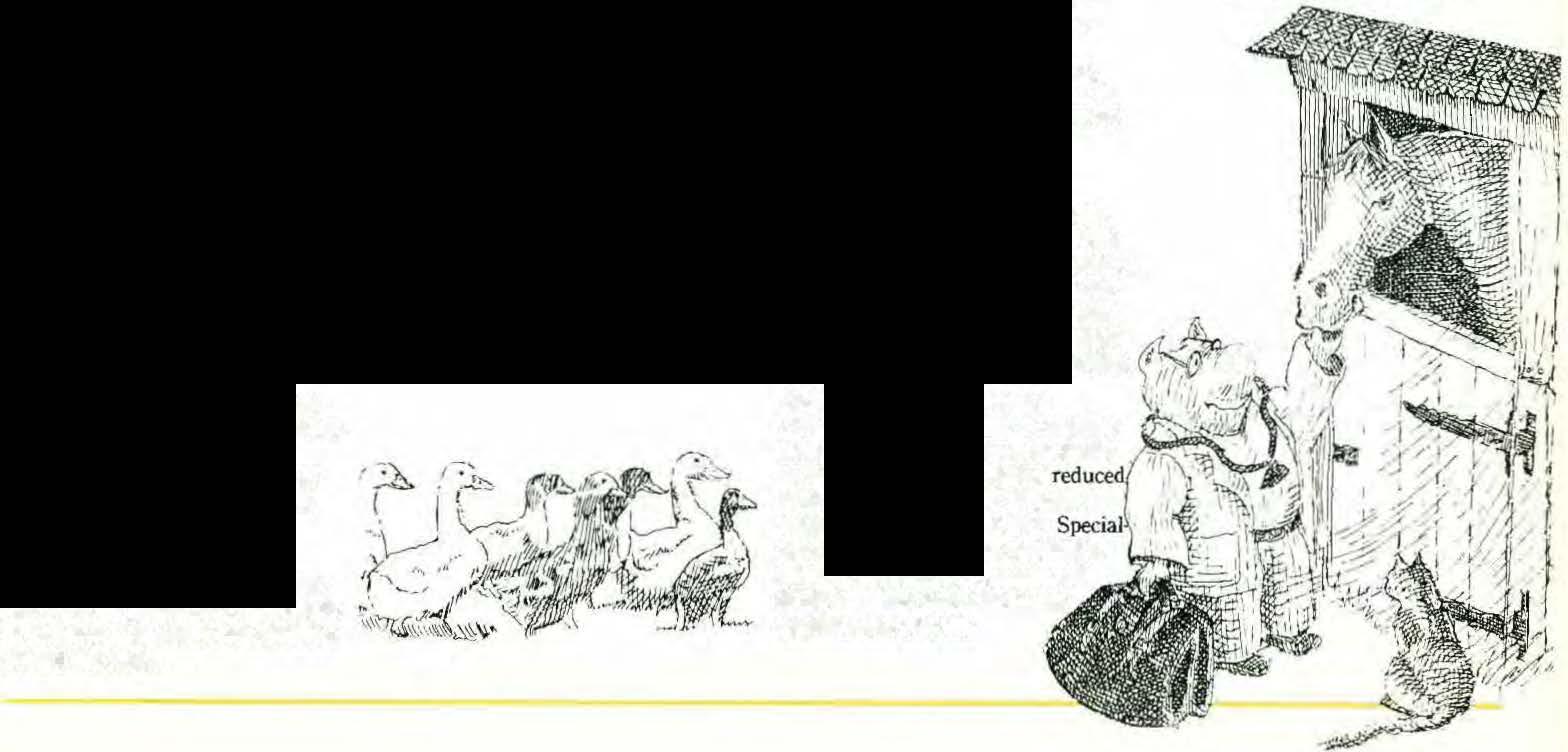
Cardiology/Diagnostk
Ultrasonography , , /, Monday through Friday 9o.m. lo S p.m.
Servicesincludecardiacconsultation,avarietyofdiagnosticservices (electrocardiograms,echocardio· grams,radiotelemetry, pbonocardio· grams), andcompletework-upsfor poorracing performance. Diagnostic sonograms can beperformed toevaluatethetendonsandligaments,vessels,umbilicus,andvariousabdominal organs.Call (215)444-5800, ext. 2359.
Clinical Laboratory Medicine
Monday through Friday, 8 a.m. to 11 p.m.; Saturday and Sunday, 8 a.m. /o 12 noon.
Emergencyserviceisprovidedat otherhours.Call (215) 444-5800, e..xt. 2250.
Equine Outpatient Clinic
Monday through Friday, 9 a.m. to sp.m.
Spccta\w::i; tnmuscular/s\<eletal problems. Acceptspatientswithout priorreferral.CallDr. William Moyer,(215) 444-5800. ext. 2405or2406.
Farrier
By appointment only.
Completefarrierservice.Call (215) 444-5800,ext.2368.
Field Service
Providesroutinehealthcareand emergencyserviceforfarmanimals andhorsesinthesurroundingcommunity.Call (215) 444-0900.
Intensive Care
Staffed around theclock, theConne1lyIntensiveCareUnitisdesigned tocareforseriouslyillorinjured largeanimals.
Large Animal Pathology Laboratory

Thislaboratoryoffersbiopsyand necropsyservices.Biopsiesshouldbe mailedto the laboratory. Animals for necropsymustbeacceptedby the dutypathologist.Call(215)444-5800, ext. 2211.
Medicine
Deals withinternal medicineprotr lems, such as respiratoryandgastrointestinaldiseases,alloflarge animals. Accepts patientswithout priorreferral.Call(215)444-5800. ext. 2111.
Neonatology
TheGraham FrenchNeonatalSectioncaresforprematureorseriously illneonates,especiallyfoals.Staffed around theclock.

Orthopedics
TheC. Mahlon KJineOrthopedicand RehabilitationCenterspecializesin arthroscopy,laser,andorthopedic surgery. Call (215)444-5800.
Radiology
Monday through Friday, 9 a.m. to 5 p.m.
Onlyreferralcasesaccepted.
Reproduction
TheGeorgiaand PhilipHofmann ResearchCenterforAnimal Reproductionprovides fertilityexaminationsforstallions,mares,andother largeanimals.Equineembryo transferservicealsooffered. Call (215) 444-5570.
Surgery
Softtissueandorthopedic surgery. Forbovinesurgerycall (215)4445800, ext. 3595; forequinesurgery call (215)444-5800, ext. 3595; for equinesurgerycall (215)444-5800, ext. 3201.
AuxiliaryServices
TheLargeAnimal Hospital has,on call,certainspecialties at thePhila· delphiacampus,such as accupuncture,dermatology,neurology,and ophthalmology.Investigatorsin researchunitsat New BoltonCenter, such as theComparativeLeukemia StudiesUnit.arealsoavailable for consultation. For informationcall (215)444-5800.
OtherServices
CenterforAnimal Health and Productivity
TheCenterprovidesdiagnostic assistanceforherdproblems.Cliniciansareavailabletoassistand/or consultwithveterinarians in the evaluationofdifficultorunusual problems.Forinfonnationcall Or. RobertMarshak,(215) 444-5800, ext. 2318.
Clinical Microbiology Laboratory
Thislaboratoryprovides a number ofdiagnosticservices for thepractitioner.Emphasisison the isolation and identificationofaerobes, fungi, salmonella,CEM(notforexport purposes)organisms,mastitisspecimens;certifiedEIA(Coggins)testing.SerologyforPotomacHorse Feveris alsoavailable.Specimens shouldbesentdirectly to Micro· biology,NewBoltonCenter. For handlingprocedurescall (215) 444-5800, ext. 2156, 2157, or2159.
Coo(>erative Poultry Diagnostic Laboratory
Monday through Friday, 8:30a.m. to 4:30p.m.
Endocrine Laboratory
Assaysonreproductive,thyroid.and adrenalhormones.Consultationon hormonalreproductjveproblems. CallDr.ElaineWatson, (215) 444-5800, ext. 2202.
Nutrition
Nutritionaladvisoryservicesare availablefordairyherdsandother livestockoperationstooptimizeeconomicproductivityandanimal healthmanagement.Theseservices areavailable through referring veterinarypractitionersorby direct contact with theSectionofNutrition. Call (215)444-5800,ext.2316. TheNewBoltonCentercampusis locatedinChesterCounty,PA.For directionsand furtherinformation pleasecontact: NewBoltonCenter 382WestStreetRoad KennettSquare,PA19348
This isaUniversity-statecooperative laboratory providingdiagnostic and consultation servicesfor poultry, gamebirds. andpet birdsinthefollowing areas:serology,bacteriology virology,and pathology. Farmvisit; may be arranged. Call (215)444-4282. (0
Cytogenetics Laboratory
Thislaboratoryprovidesacomplete chromosome and karotype analysis on largeanimalswitheither ���"�ur fertility.developmentaldisorders. embryonicorfetalmortality.V"'-·"'·'"' izedbandingtechniquesavailable. Priortosubmittingasample,call (215) 444-5800, ext. 2204foran appointmentandkit.

Spring 1988
BellwetherispublishedbytheSchoolof VeterinaryMedicineattheUniversityofPetmsylvania,incooperationwiththeUniversityof Pennsylvania.OfficeofUnivusityRelations
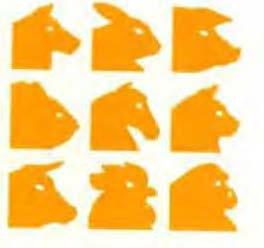

Editor: Helmameks
Writers:
Helma Weeks
Dr. M.Josephine Deubler (AnimnlCrackers)
Illustrator: MarieGarafano
Photographers: AdamGordon
Lynne R. Klunder
New Bolton Liaison: CatherineLannore
�a liketohearyourpraise.criticisms,or comments. Please addressyourcorrespondence to:
Helma Weeks, UniversityofPennsylvania. Schoolof�terinaryMedicine,3800Spruce Street,Philadelphia.PA19104-6010 (215)-898-1475
orlinda Fucher, University ofPermJylvania•. Office ofUniver.rity Relations.410LoganHall, Philadelphia.PA19104-63trl
Noneoftheseaniclesaretobereproducedin anyformwithoutthepennissionoftheedi.Jors a/Bellwether.1988CopyrightbytheTrustees oftheUniversityofPennsylvania.

Bellw·ether
University ofPennsylvania SchoolofVeterinary Medicine
3800SpruceStreet Philadelphia, PA 19104-6008
